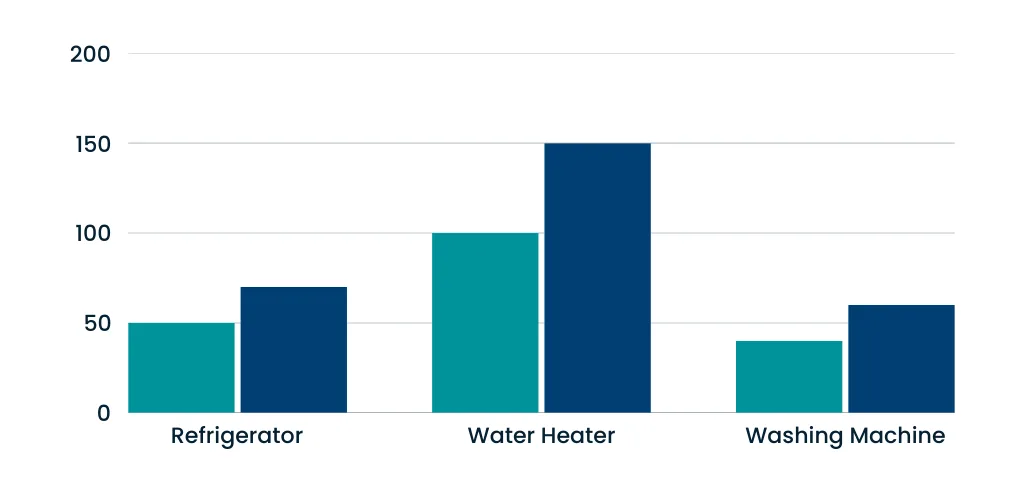I’ll never forget the day when I opened my electric bill during a scorching July. My jaw hit the floor as I stared at the numbers. Thermodynamics in everyday life was the last thing on my mind, but that bill made me dig into it. My air conditioner was working hard, and I couldn’t understand why it cost so much. Then I stumbled onto thermodynamics, and it clicked. This isn’t some boring science that is locked in a textbook. It’s the study of energy—how it moves, changes, and powers our lives. You can save it, spend it smartly, or watch it go away. Energy works the same way, and it’s everywhere around us. In this article, I have shared my experience and different studies. At the end of the article, you will be aware of the importance of thermodynamics in our everyday life. Let’s dive deep into it.

How Thermodynamics Affects Your Daily Activities
Thermodynamics isn’t just for scientists; it’s in your daily routine. That coffee you sipped this morning cooled off because heat flowed into the air. Your car started up because energy switched from fuel to motion. It’s not confined to a lab; it’s a part of our daily lives. It can save you money on bills or make your home cozier if you grasp it. I used to be confused by a fridge that wouldn’t stop running. However, I was able to fix it with a little knowledge. It’s practical, relatable, and worth a closer look. Here I have composed some heat transfer scenarios in a table to understand this concept:
| Scenario | Energy Flow Direction | Practical Impact |
|---|---|---|
| A steaming cup of tea | Tea → Air | The tea cools down, losing heat to the room. |
| Ice in a glass of water | Water → Ice | Heat moves into the ice, causing it to melt. |
| Oven baking cookies | Oven Walls → Cookie Dough | Heat transfer cooks the dough uniformly. |
| Laptop overheating during use | Processor → Surrounding Air | Cooling systems disperse heat for safety. |
Energy Efficiency and Cost Savings
Heating and Cooling
Walk into your house, and thermodynamics is already at hard work. Heating and cooling are prime examples. Heat sneaks through walls. It drifts in the air or pours in from the sun. I once spent a winter shivering because my thin walls were letting heat leak out like a sieve. I added some insulation to seal it up, and a smart thermostat kept things steady without draining my bank account. Here’s a tip I picked up. Drop your thermostat by 2 degrees in winter. You could cut heating costs by 10%. Small change, big reward.
Cooking
Cooking is another place where thermodynamics takes center stage. It’s all about moving energy into your food. I used to boil pasta with the pot uncovered when I was a child. Steam escaped everywhere. Then I realized a lid keeps the heat in and speeds things up. Pan size is important as well. If you use a small pan on a big burner, you’re tossing heat away. If you use a huge pan on a tiny burner, it takes forever. Match them up, and you’re cooking more efficiently.
Appliances
Your appliances run on thermodynamics every day. The fridge hums to pull heat out, while the water heater pumps it in. I’ve learned simple tricks to keep them running smoothly. Cleaning the dust from the fridge coils is one method. Another is setting the water heater to 120°F. These prevent wasting energy. Check out my experience here:
Energy-Saving Tips for Common Appliances
| Appliance | Energy-Saving Tip | Expected Benefit |
|---|---|---|
| Refrigerator | Keep coils clean and ensure door seals work | Reduces cooling effort and power usage |
| Washing Machine | Use cold water settings when possible | Saves energy used for water heating |
| Air Conditioner | Clean filters regularly | Improves efficiency and reduces power |
| Water Heater | Insulate hot water pipes | Minimizes heat loss and saves energy |
Savings like that add up fast. With a few tweaks, like choosing reliable appliances or maintaining what you have, you can use thermodynamics to your advantage. It saves you money and keeps your home as comfortable.

Top 10 Thermodynamic Tips for Everyday Life
I’ve picked up a few tricks over the years that turn thermodynamics into a money-saving tack tick in my everyday life routines. One thing I want to clear that, these aren’t guesses. They’re straight from the science of energy, tested in my own life. Here’s a list of my ten favorites that anyone can try:
- Pop a lid on pots: I will, generally, watch steam cloud up while, albeit, I cook my rice. A lid keeps heat where it belongs. This significantly reduces the cooking time.
- Seal drafts: My old apartment was filled with gaps around the windows. Cold air sneaked in through those gaps. A bit of caulk stopped the drafts from happening.
- Grab ENERGY STAR gear: I switched my fridge to one with that label. I am able to save twenty dollars per year. Therefore, I am now paying less every year. Small win, big smile.
- Carpool or bus it: I started sharing rides with a neighbor, and my gas costs took a nosedive.
- Set the water heater to 120°F: I once turned it from 140°F down to 120°F, and it continues to bathe me just about as warm-perfectly! Saving energy at the same time.
- Sunlight: Open curtains, in place of flicking switches and letting the sun in, feels like a pleasure that is free of charge!
- Tune your car’s engine: My mechanic fixed a sluggish motor, and suddenly my mileage jumped.
- Unplug chargers: I caught my phone charger sipping power when not in use—yanking it out became a habit.
- Use a programmable thermostat: I use a thermostat that can be set to ease off when I’m asleep or out. The house stays cozy, and the bill shrinks.
- Tell a friend: Sharing these with my sister got her hooked, and she saved on her electric bill as well.
These aren’t fancy moves, just practical tricks that lean on how energy flows. Try one, and you’ll see the difference.
Thermodynamics and the Environment
How Energy Efficiency Helps the Planet

Thermodynamics is not simply about my wallet, you know; it is all about the air we breathe. Wasting less energy means burning less fuel, which equally reduces greenhouse gases. For me, this seems like spilling water out of a jug. Use only what you need. Then there’s more left for tomorrow. I turned off a hallway light last week, not because I’m cheap, but because it hit me as every watt counts. Scientists say homes and cars pump out a huge chunk of emissions. By adjusting how we use energy, we can lighten that load.
A factory near my town started reusing heat from its machines to warm the building. Their emissions dropped, and they boasted about it online—20% less fuel was burned. That’s thermodynamics use in our everyday life, saving cash and cleaning up.
What You Can Do
Start small, as I did. Unplugging an old laptop charger that sat there humming felt oddly satisfying, like I’d caught a tiny thief. Or you could try biking to the store instead of driving; I did that once and felt smug watching gas prices rise. Pick something from this list or earlier sections and run with it. The planet won’t thank you out loud, but your bank account might.
Below is a quick look at what small shifts can do:
| Action | Energy Saved (kWh/year) | CO2 Cut (lbs/year) |
|---|---|---|
| Lower thermostat 2°F | 300 | 250 |
| Unplug idle chargers | 50 | 40 |
| Bike instead of drive | 200 (10 miles/week) | 160 |
When we all pitch in, those numbers aren’t huge, but they stack up. Thermodynamics shows us the lines— waste less and gain more in our everyday life. I’m not a hero, just a guy who likes a lower bill and a cleaner world.
Conclusion
Thermodynamics isn’t some exotic idea. It’s active in my kitchen, my car, and even my office. I used to work there writing this article. I’ve burned my fingers on a hot pan. Not only that, but I’ve watched my gas gauge drop too quickly. Each time, I’ve seen how energy plays by its own rules. Figuring out those rules has saved me money and made life run smoother. Take my leaky apartment windows—I sealed them up, and my heater didn’t have to work as hard. Or that time I swapped a clunky old bulb for an LED and grinned at the lower bill.
You don’t need a lab or fancy math to make this work. I am far from an expert at anything but acquired some odd bits and pieces here and there through trial and error. Begin with the little things, like unplugging that charger or putting the lid on that pot. I did, and it stuck. The science of energy isn’t here to confuse us. It’s a tool we can use to cut costs. It can boost how things perform and maybe leave the planet a little better off. Give one idea a shot today. I bet you’ll notice the difference before the week’s out.




